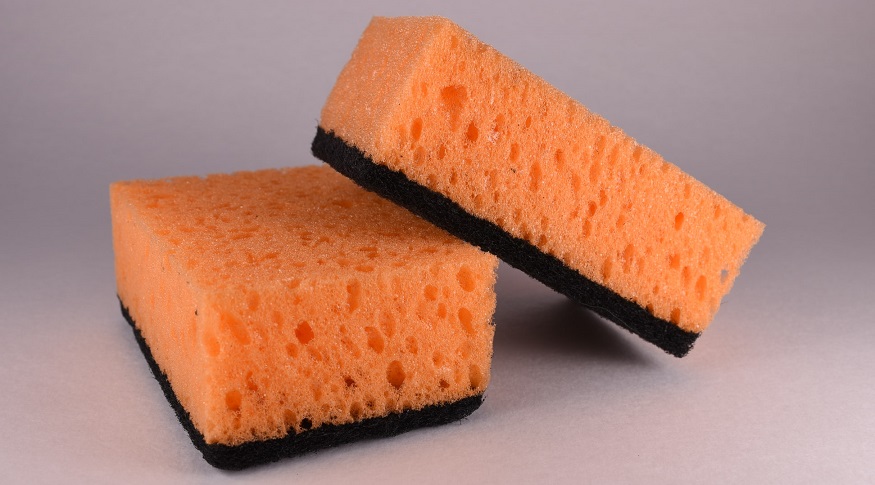
New hydrogen storage sponge design may make EV fuel cells safer
April 30, 2020Among the biggest challenges to H2 adoption is its safe storage, but researchers may have solved this issue.
A team of Northwestern University scientists says they have made a breakthrough using a type of hydrogen storage sponge design that will help overcome one of the top barriers to hydrogen electric fuel cell vehicles (FCV).
This new design could make these vehicles notably safer and enhance the distance needed before refuelling.
The scientists say that they have come up with a sponge-like metallic material that can store larger amounts of H2. The hydrogen storage sponge makes it possible to store a larger amount of the fuel at a lower – and therefore safer – pressure than is the case with current conventional tanks.
“It’s like a bath sponge but with very ordered cavities,” explained Professor Omar Farha, who led the team from Northwestern University from Evanston, Illinois. He went on to explain that it is similar in the sense that a bathing sponge can absorb spilled water, which someone can then wring out and reuse.
On the other hand, this new material uses pressure to store hydrogen gas molecules and then release them.
The hydrogen storage sponge doesn’t need nearly the pressure required for conventional tanks.
A conventional H2 tank stores the fuel at 10,000 psi (700 bar), which is about 300 times the pressure of a car tire. The high pressure is needed because the density of this gas is extremely low, so the pressure is used to contain as much of it as possible in order to lengthen the distance traveled before refuelling is required.
Therefore, the tanks walls must be thick and strong, making them expensive to produce and heavy to include in a vehicle. Moreover, using current conventional tanks, the majority of hydrogen fuel cell vehicles can travel only about 300 miles per tank before refuelling.
That said, using the NU-1501 metallic hydrogen storage sponge, tanks wouldn’t require as  much pressure to contain more H2. Therefore, they can be constructed with thinner walls for a larger capacity. This improves both the safety and the range of hydrogen fuel cell vehicles.
much pressure to contain more H2. Therefore, they can be constructed with thinner walls for a larger capacity. This improves both the safety and the range of hydrogen fuel cell vehicles.



 HFN News is your leading source for fresh hydrogen and renewable energy updates. Amid the fast-paced growth of hydrogen companies, we provide top-notch news and insights about this exciting sector. Our coverage spans from hydrogen cars to global sustainable initiatives, and we highlight the latest in green jobs and developing hydrogen hubs. We invite you to share your local hydrogen news and explore today’s renewable energy job listings on our site. Thanks for choosing HFN News as your trusted guide to the hydrogen and renewable energy world!
HFN News is your leading source for fresh hydrogen and renewable energy updates. Amid the fast-paced growth of hydrogen companies, we provide top-notch news and insights about this exciting sector. Our coverage spans from hydrogen cars to global sustainable initiatives, and we highlight the latest in green jobs and developing hydrogen hubs. We invite you to share your local hydrogen news and explore today’s renewable energy job listings on our site. Thanks for choosing HFN News as your trusted guide to the hydrogen and renewable energy world!
Is the NU-1501 metallic hydrogen storage sponge in production today. Who is making this product & how is being used.
Who owns the patent(s) on this hydrogen storage sponge?
This sounds remarkably similar to the technology being developed at Lancaster University in the UK – associated with start-up company Kubagen. I wonder if they know about each other? Maybe work together – this is such a promising development. Rare earth metals will eventually run out and, as they become more rare, price will go up steeply. So electric cars will become even more expensive. Hydrogen, on the other hand, is the most plentiful fuel source in the universe. Governments need to invest more.
The researchers should compare top Liquid Organic Hydrogen Carrier ehat Store 6 ma per cent hydrogen related to the Carrier nur at Ambient pressure. One need ist the Chance to transport the energy. Ist it possible with sponges?
What is cost of sponge $/Kg of H2 store
How much H2 in kg, One sq.meter of H2 sponge can store?